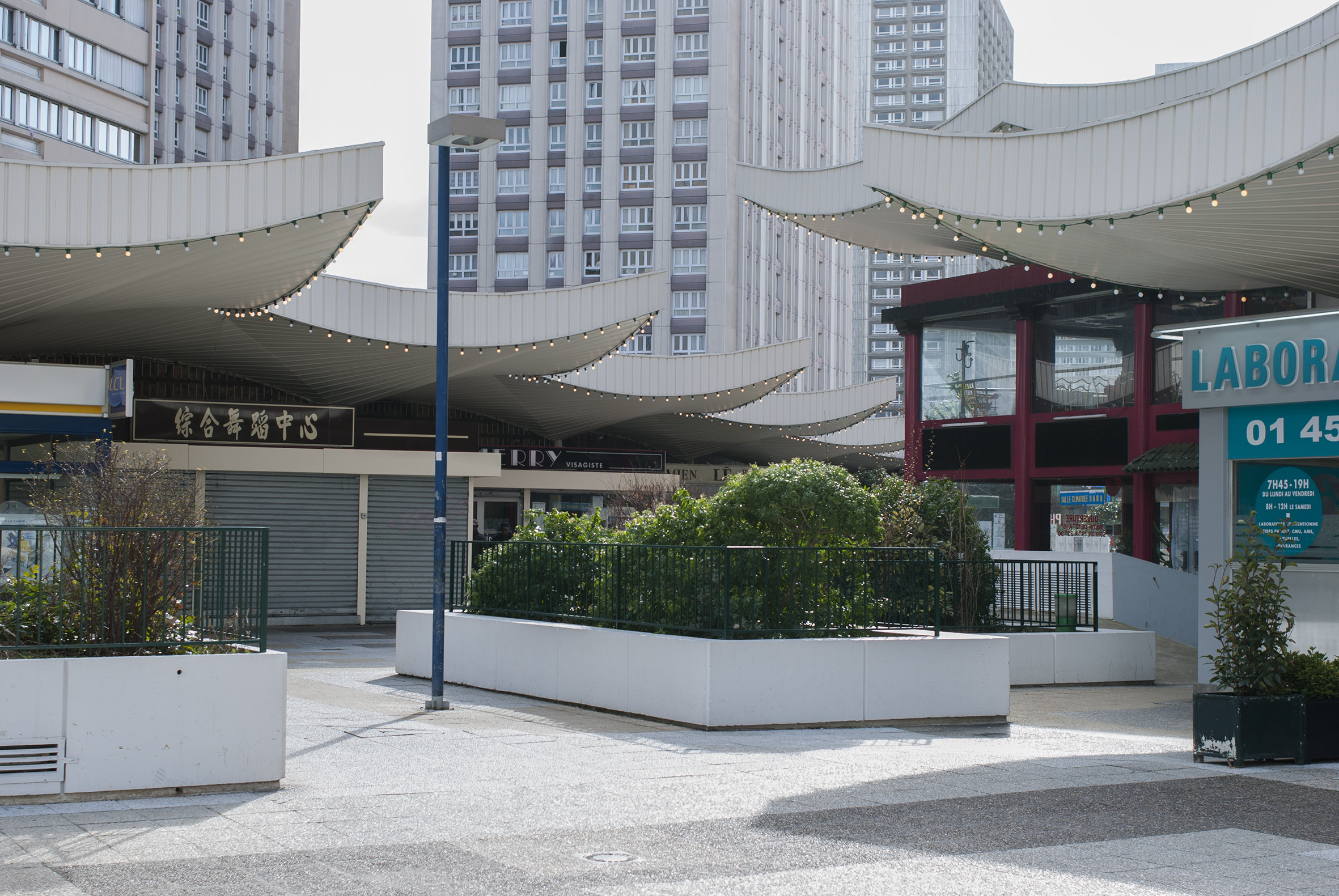13e arrondissement Paris - school assignment 2010
During the sixties urban planners redeveloped some of the areas of the 13th district of Paris. This particular district was a typical working class area with a great amount of factories. It was generally considered uninhabitable because of its badly constructed buildings.
The working-class neighbourhood with her grey appearance would be a better city. No longer defined by streets, but through established structures that were guided by functional considerations. Situated around Place d’Italie there had to be a renovation to the entire area: called Italie 13
The main points were:
- Towers and low height buildings (ground scrapers) are displayed independently of the city’s arrangement along an approximate North-South axis
- Under the huge elevated esplanade there are functional streets for loading and unloading of goods for the shops that are situated on the esplanade
- The esplanade is exclusively dedicated for pedestrians.
The new structure was planned to have a large and high structure to create more ground space.
From this plan the new district Les Olympiades was created. It was built between 1969 and 1974 and was the model for the new, modern, ‘ideal city’ with plenty of commercial and business facilities. Italie 13 was also originally designed to attract a population of young professionals.
Chinatown
At first they all had other plans with this district of Paris. But what was intended as an ‘ideal’ city rand into criticism. Les Olympiades, with its high towers, was not a positive image for the 13th arrondissement. That’s why they stopped in 1974 with Italie 13. The district was left with high concrete towers where nobody wanted to live. The plan had failed.
Yet it was not an uninhabitable place. More and more Vietnamese and Chinese immigrants settled in this area. There where nodoby wanted to live, saw the Chinese immigrants in this district their ‘promised land’. From the late 70s the area was inhabited almost entirely by Chinese and Vietnamese people.
During the sixties urban planners redeveloped some of the areas of the 13th district of Paris. This particular district was a typical working class area with a great amount of factories. It was generally considered uninhabitable because of its badly constructed buildings.
The working-class neighbourhood with her grey appearance would be a better city. No longer defined by streets, but through established structures that were guided by functional considerations. Situated around Place d’Italie there had to be a renovation to the entire area: called Italie 13
The main points were:
- Towers and low height buildings (ground scrapers) are displayed independently of the city’s arrangement along an approximate North-South axis
- Under the huge elevated esplanade there are functional streets for loading and unloading of goods for the shops that are situated on the esplanade
- The esplanade is exclusively dedicated for pedestrians.
The new structure was planned to have a large and high structure to create more ground space.
From this plan the new district Les Olympiades was created. It was built between 1969 and 1974 and was the model for the new, modern, ‘ideal city’ with plenty of commercial and business facilities. Italie 13 was also originally designed to attract a population of young professionals.
Chinatown
At first they all had other plans with this district of Paris. But what was intended as an ‘ideal’ city rand into criticism. Les Olympiades, with its high towers, was not a positive image for the 13th arrondissement. That’s why they stopped in 1974 with Italie 13. The district was left with high concrete towers where nobody wanted to live. The plan had failed.
Yet it was not an uninhabitable place. More and more Vietnamese and Chinese immigrants settled in this area. There where nodoby wanted to live, saw the Chinese immigrants in this district their ‘promised land’. From the late 70s the area was inhabited almost entirely by Chinese and Vietnamese people.










